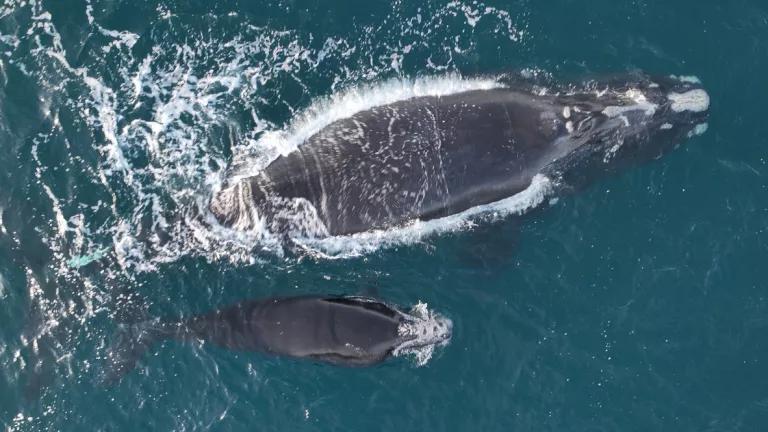A Bar Too Low: National Wolf Delisting
The U.S. Fish and Wildlife Service has been trying to cut wolves loose for the better part of a decade—and now the Trump administration is letting it happen.

A gray wolf on the shore of Yellowstone Lake in Yellowstone National Park
The U.S. Fish and Wildlife Service has been trying to cut wolves loose for the better part of a decade—and now the Trump administration is letting it happen.
No one was surprised when the Trump administration proposed removing Endangered Species Act protections from wolves across the entire Lower 48 states with the exception of the small, struggling population of Mexican wolves in the Southwest. The U.S. Fish and Wildlife Service (FWS) has been trying to cut wolves loose for the better part of a decade. Today’s proposal to lift endangered species protections for the species just uses different reasoning to try to accomplish the same predetermined outcome. Let’s break it down.
To understand the proposal requires understanding the complex history of gray wolves and the Endangered Species Act. Gray wolves used to roam nearly all of the continental United States, but by the middle of the 20th century, due to a large-scale, government-funded extermination program, wolves had been eliminated from the Lower 48 states with the exception of the deep woods of Minnesota. In the 1970s, when the Endangered Species Act was passed, gray wolves throughout the Lower 48 were added to the list and the FWS was charged with recovering the species.
The problem is that the FWS never developed a national recovery plan for gray wolves as it should have and as it has been petitioned to do multiple times. Instead the agency focused on recovering three isolated population of wolves: one in the Midwest (or western Great Lakes), one in the Northern Rockies, and one in the Southwest. Once those populations began reaching a certain size, the FWS tried to remove endangered species protections from each of the individual populations separately rather than address the Lower 48 wolf population (i.e., the entire listed entity) as a whole. Doing so has caused legal challenges for the FWS over the years. This most recent proposal is a response to a court finding overturning the agency's latest attempt to delist the midwestern population of wolves.
The crux of the issue here is what does it mean to recover a species? Wolves used to be found across most of the country. We agree that wolves don’t have to be recovered everywhere they used to be found—much of their Lower 48 habitat is now uninhabitable for them. But there is still plenty of suitable habitat left in areas such as the Southern Rockies, parts of California and the Pacific Northwest, and, notably, the Northeast. We believe federal protections should remain in place in these areas until wolves have recovered to their full potential.
In this latest proposal, however, the FWS is arguing that the only thing it needs to do to declare wolves recovered in the rest of the United States (excluding the Northern Rockies and Mexican wolves) is to make sure there is a stable population in Minnesota and one additional population outside of Minnesota (in this case Wisconsin). That’s it. It is as if the FWS has flipped the definition of recovery on its head. Rather than asking, “What would national recovery of this species look like?” it has asked, “What is the absolute bare minimum that we could do that would allow us to wash our hands of this issue?” Or, in other words, how low can we go? At a time when we are facing an extinction crisis at a global scale, committing to managing for the bare minimum is not what species recovery should look like.
The reintroduction of wolves into Yellowstone and the expansion of wolves in the Great Lakes is one of the Endangered Species Act’s greatest conservation success stories, but the job is not finished. Great potential remains for continued recovery into significant portions of wolves’ former range. Removing protections from across the Lower 48 now would shortcut the recovery process and guarantee that wolves never fully recover in the United States. The FWS needs to stop looking for an easy way out and do what is required under the law: Recover wolves nationally.




